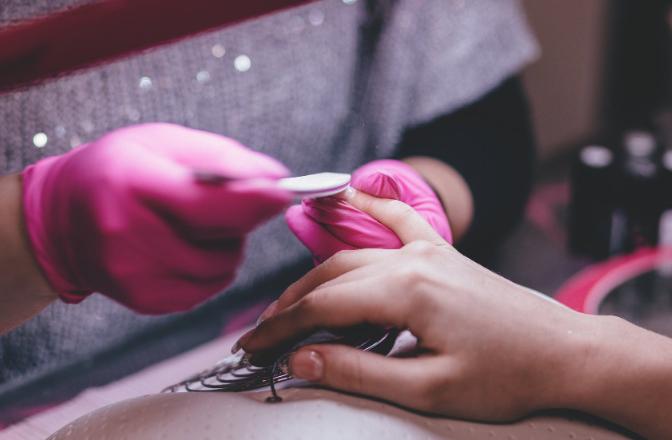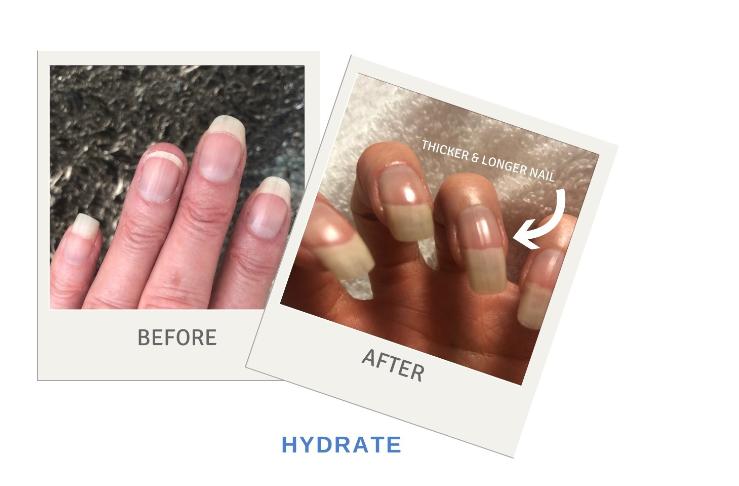How To Prevent Toenail Fungus
No one wants to experience toenail fungus (also called onychomycosis). However, it is relatively...
Over the course of the last few decades, gel and acrylic nails have seen a huge uptick in popularity. While professional manicures were once only affordable to the rich and famous, today, there are nail salons on virtually every corner, and they offer services that are accessible to nearly everyone.
Having your nails done professionally is a great way to treat yourself to some pampering and boost your confidence. There is a darker side, though. Getting a manicure or pedicure is not without risk, and gel nails and acrylic nails can have a negative effect on your natural fingernails. Some people can even be allergic to false nails, according to the British Association of Dermatologists. Before you book your next manicure appointment, keep reading to discover some of the potential risks of gel polish and gel nails.
When you get your nails done, your hands and fingers are exposed to all sorts of things that can cause allergic reactions. Nail glue, nail polish, and acrylic nails can all cause contact dermatitis. Some people experience allergic reactions after having gel nails or polish applied, too. If you are allergic to any of the supplies used during your manicure, you could develop a red, itchy rash, blisters, or swelling on your fingertips or hands. In severe cases, some individuals experience breathing problems.
To minimize the risk of contact dermatitis or another type of allergic reaction, only choose nail salons with highly trained employees. Problems are less likely to occur when a manicure is done by someone with the proper knowledge and experience.
Acrylics and gel nails may look beautiful, but they can damage your natural nails. While the false nail itself is unlikely to cause damage, improper application, use, care, and removal can lead to serious problems. Even the use of the wrong tools can do serious damage to your natural fingernails.
False nails need to be applied carefully to ensure that they are thoroughly bonded to your natural nails. If there are any gaps or openings, moisture or bacteria could enter the space between a false nail and the natural nail and cause a nasty infection. For this reason, it is also important to have artificial nails repaired right away if they become damaged or start to lift away from the natural nail.

Fungal infections may also occur as the result of improperly cleaned manicure tools. Germs can also be spread through pedicure baths in nail salons, so scheduling an appointment at a salon that doesn’t have an excellent reputation for cleanliness could be a huge risk. Keep in mind that if you have even the tiniest cut on your hand, bacteria could enter the wound and spread throughout your system. While this scenario is rare, it is something that could happen when getting a manicure at an unsanitary salon.
For many people, problems don’t arise until it comes time to remove the nail. Whether you have acrylic or gel needs, special care needs to be taken during the removal process in order to avoid serious damage to the natural nail. If you simply peel or pry the false nails off, you will likely remove layers of the underlying fingernail. This will, of course, make your nails weak and brittle. Gels and acrylics should only be removed after soaking in acetone.
Gel manicures require the use of a UV light (Ultraviolet Light), also referred to as UVA light. The light cures the gel and binds it to the nail, but it can also damage your skin due to UV exposure. Though the UV exposure is brief, the UV / UVA rays from these lamps are more intense than those from the sun.
In time, exposure to UV lights in nail salons can cause premature aging and could even increase your skin cancer risk. Keep in mind, too, that the lights used during gel manicures can be problematic for those who are highly sensitive to UV light. One’s sensitivity to UV lamps and UV light can be increased by certain medications and supplements, some medical conditions, and genetic factors. If you are sensitive to this type of light, you may want to avoid gel manicures.
Manicures are beautiful, but they aren’t without risk. The good news, though, is that if you have them done by a reputable licensed salon and you take steps to maintain false nails properly, most of the risks can be avoided.

If you enjoy getting your nails done, there is no reason to skip the salon altogether. Despite the potential risks, it is possible to maintain healthy natural nails when you prefer the look of gels or acrylics. All you need to do is choose the right salon and nail technician and take steps to properly maintain your nails.
Have your nails become weak or brittle due to excessive use of gels or acrylics? Doctors Kline + Green Hydrate can help. HYDRATE will improve the appearance of nails that have been damaged by gel manicures or other environmental stress. Try it for yourself to restore the health and beauty of your natural nails!